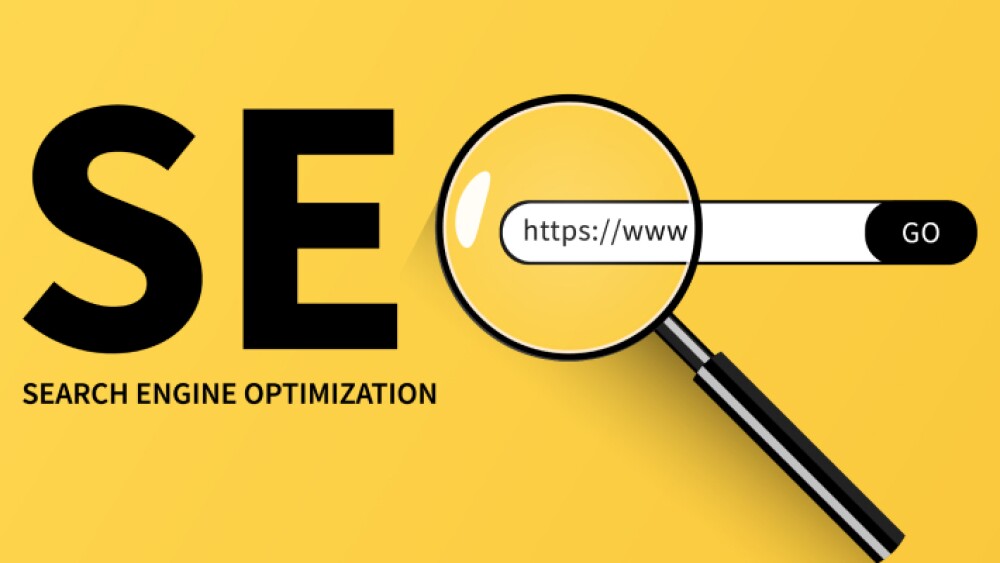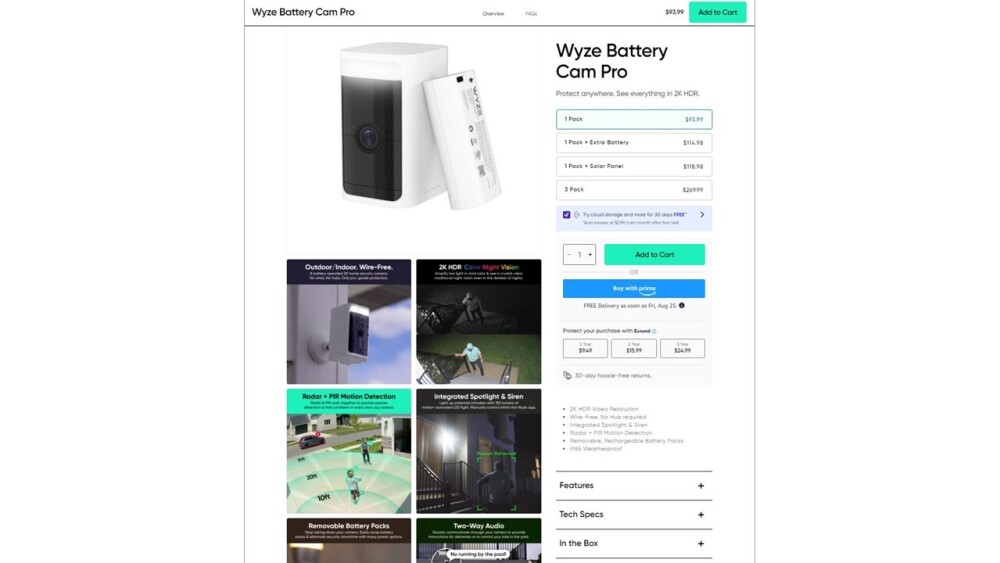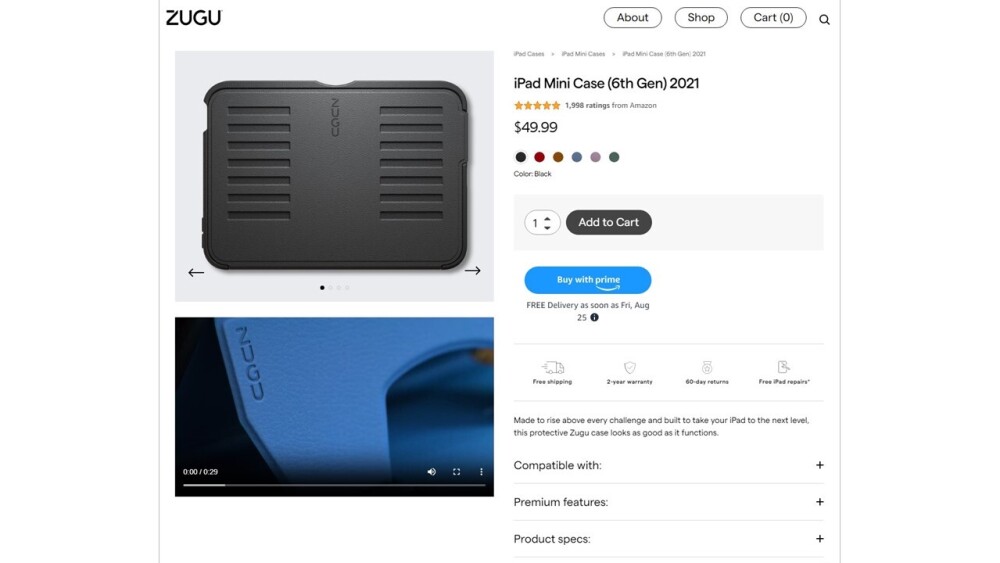A home page with rich brand information can do wonders for your ecommerce business, but your individual product pages are equally important. For many of your site visitors, a product page may be the first and only experience they have with your brand. And more often than not, they’re going to get there through search. According to research from PwC , 54% of consumers rank search as their top source for pre-purchase information.
What makes a perfect ecommerce product page?
Fundamentally, the measure of a great product page is how effectively it showcases—and sells—your product. Through a mix of user experience (UX) elements, high-quality imagery, detailed information, branding, and great writing, it should answer most questions a customer might have. It should also give them the confidence to make a purchase —with as little friction as possible.
To help you get a better sense for how industry leaders approach their ecommerce product pages, the Baymard Institute maintains a database of more than 1077 examples , as well as a trove of product page user experience (UX) research and benchmarks . While optimizing your product pages for search is a moving target, ongoing incremental improvements can help improve shopper confidence to make a purchase on your ecommerce site.
High-converting product pages can be a great growth driver for your business. Through product page optimization, you can ensure that all the critical elements of those individual pages are performing at their best. From the quality of your user experience to the depth of your product descriptions, images, and calls to action, finding ways to enhance the way your products show up in search is a worthwhile investment.
No matter how great your product page is, if it’s not optimized for search, valuable high-intent customers have a lower chance of discovering it on their own. Ranking high on the first page of search results is crucial, with less than 1% of searchers ever clicking through to the second page.
The good news is that search engine optimization (SEO) for product pages isn’t as mysterious as you might think. Search engines employ a complex set of algorithms that determine a user’s true intent by parsing the semantic context of their search query. They then evaluate how well the results match up based on a few primary factors, including:
- User engagement: Clickthrough rates, bounce rates, and time spent on a page are among the many metrics used to determine user satisfaction with search results.
- Popularity: The historic number of times users click on a particular result tells search engines how useful the content is.
- Content quality: Based on an assessment of credibility and accuracy, authoritative content ranks higher.
- Term weighting: Numerical values are assigned to keywords to determine which terms take priority.
The following tips can help to ensure that your product pages are enhanced for SEO.
Tip 1: Do your keyword research
Use tools (like SE Ranking , Free Keyword Research , or Keyword Explorer ) to develop a list of realistic, accurate keywords to describe your product, striking the right balance between the estimated traffic for certain terms and the cost per click, which indicates how much competition you’ll have for specific terms. The goal of keyword research is to find the most popular keywords in terms of traffic that have the least competition.
Don’t choose keywords with so much competition that your chances of ranking on page one is unlikely. And conversely, don’t choose keywords that simply don’t have enough search volume to drive a meaningful volume of traffic or conversions.
Many merchants also choose to analyze the keywords of competitors who rank higher, taking cues from their product and category pages for inspiration. Although, be aware that going up directly against a competitor with established domain authority is always an uphill battle.
The broader your keywords, the higher the keyword difficulty . The more you can narrow down your product keywords with specifics, the less competition there will be. Think “cocktail dress” vs. “knee-length cocktail dress with pink flowers.” Known as long-tail keywords , these kinds of searches are valuable because they have a higher buyer intent, which can lead to higher conversions. Broad, general keywords tend to be dominated by big players, and you’ll pay a premium to own them on search engines.
Tip 2: Use your keywords strategically
Search engines tend to punish product pages that are over-stuffed with keywords. As a general rule, you should incorporate your keywords:
- In the product page’s URL
- Frontloaded in the product description title itself (or H1 heading tag)
- No more than two or three times in the body copy
- Once each in your alt image tag and image file name
Include your main keyword in your meta description and meta tags to increase the chances of getting noticed in Google results. This can also potentially help increase clickthrough rates, which can help improve your ranking. And always remember to include key details in your title tags and meta descriptions, including your brand and product information like the brand and name of the product, the model number, color, and dimensions when appropriate.
Tip 3: Make your navigation and internal linking intuitive
Your site’s structure, or how well you organize your category and product pages to surface relevant content to shoppers in the fewest clicks, is a key factor in your search engine results page (SERP) performance. Your general product categories, URLs, and subdomains should be simple and scalable, with a logical hierarchy that also makes the information easy to filter.
Bad navigation impacts search rankings because it reduces the authority of your domain. Ease of navigation and a logical internal link ecosystem can increase user engagement, and improve your brands’ visibility in search results.
A clean and thorough sitemap also allows search engines to crawl your site more efficiently. Make your product categories and URLs easy to understand by a human, and mark up your pages with schema to structure your product pages so search algorithms can accurately classify them for search results. Your schema should include product metadata, such as product title, description, category, price, and SKU.
Tip 4: Feature high-quality brand content
It’s not just about good copy. Detailed product images, video, and rich brand information can all help bolster your SEO. According to Baymard , 56% of shoppers begin exploring product images immediately after arriving on an ecommerce page, yet 25% of sites still don’t have product images with sufficient resolution. Shoppers zoom in on product images to inspect the details of fabric, stitching, finish, and materials. But when low-quality photos prevent this close inspection, bounce rates increase. Details are especially important if you’re seeking to engage quality-focused shoppers .
Include high-resolution product images from every angle, and incorporate lifestyle images that showcase your products in use. Video is another key way to showcase your brand, especially UGC-submitted video reviews. According to one study , “2 out of 3 people would be more likely to buy something after seeing a video testimonial from a previous customer.” Video plays well with both shoppers and algorithms.
You can also use blogging as a way to create linkages to and from your product pages to give users more context and insights to that can help them make a purchasing decision.
Beyond internal linking relevant content to your product pages, the more backlinks that you can get to your ecommerce product pages from authoritative external sites and social media accounts, the better it will be for your SERP. Over time, the totality of your branded assets and links back to your product pages not only help drive traffic to your site, but also tell search engines that your content has value.
Tip 5: Optimize product details and meta descriptions
Search engine algorithms don’t love duplicate content because redundancies make it hard to determine the authoritative source. So make sure each of your individual product and meta descriptions are as specific and original as possible. High-quality, original content has a lower bounce rate, which is a key factor in how search engines determine the value of your pages.
Incomplete or unclear product descriptions can also lead to lower conversion rates and higher bounce rates, which not only affect how search engines index information, but also send signals to search algorithms that the content is less useful to searchers.
A good rule of thumb is to ensure that your product page descriptions include 300–400 words of clean, persuasive text highlighting benefits and features, including useful product measurements, material specifications, warranty information, and any other details that the average shopper looks for when making buying decisions.
Adding an FAQ, along with the related schema, is another good way to enhance your product pages and boost exposure. A well-crafted product description builds trust and minimizes doubt, anticipating and addressing any questions a customer might have. This, in turn, improves your SEO for product descriptions.
Tip 6: Check your page load speed
When a web page takes too long to load, half of surveyed online shoppers say they leave a site—even if they’ve added items to their cart. Every millisecond counts when it comes to page-load speeds, and speed itself is a significant ranking factor for Google.
More than half the website traffic worldwide now comes from mobile devices , with ecommerce sales expected to double by 2025 , so making sure your photo and video assets on your product pages are optimized for mobile users is critical. Your high-quality visual content should be compressed so it can be viewed on mobile and desktop devices without latency.
Use Google’s mobile-friendly test tool or other free tools to gauge the speed of your product pages, espacially after you’ve added all that rich media, and identify where you can make changes to improve page load time.
Tip 7: Feature product reviews
A survey conducted by Power Reviews found that 98% of surveyed consumers believe that “reviews are an essential resource when making purchase decisions.” Search engines tend to agree. Featuring reviews on your product pages is an easy way to introduce fresh, relevant, user-generated content that search engines use to determine authority and value to users.
Also, including a visual ratings distribution summary can help users form a quantitative interpretation of your customer reviews. In fact, when offered, 90% of test participants use the distribution summary feature to analyze the suitability of products to meet their needs.
(Learn about other UX optimizations that help increase conversions in the free Baymard Institute report commissioned by Buy with Prime and Amazon Pay.)
Shoppers increasingly look for social proof of quality and they tend to consider customer-generated product reviews to be more trustworthy than content provided by brands or websites. Merchants using Buy with Prime can tap into Reviews from Amazon to add hard-earned customer reviews directly on product pages on their ecommerce site, helping boost brand credibility and shopper trust.
Tip 8: Embrace A/B testing to enhance your product pages
There’s always something you can do to hone your product pages to boost your search results and conversions. From changing the placement of your call to action to switching product images and experimenting with the language in your title tags, testing can help you find the best way to present your products to users.
A/B testing is the tool that puts your data and benchmarks to use so you can gather insights to objectively tell which changes to your product pages drive the most traffic and conversions from search.
You have a lot of options and tools at your disposal to build product pages that engage and convert. At the end of the day, if you build a logical structure to make it easy for shoppers to find products on your site, running tests to find the right mix of detail and assets that make the value to users (and algorithms) clear, and executing a SEO-focused content strategy can help improve exposure for your products in search.
Learn how Buy with Prime can help grow your ecommerce business.



